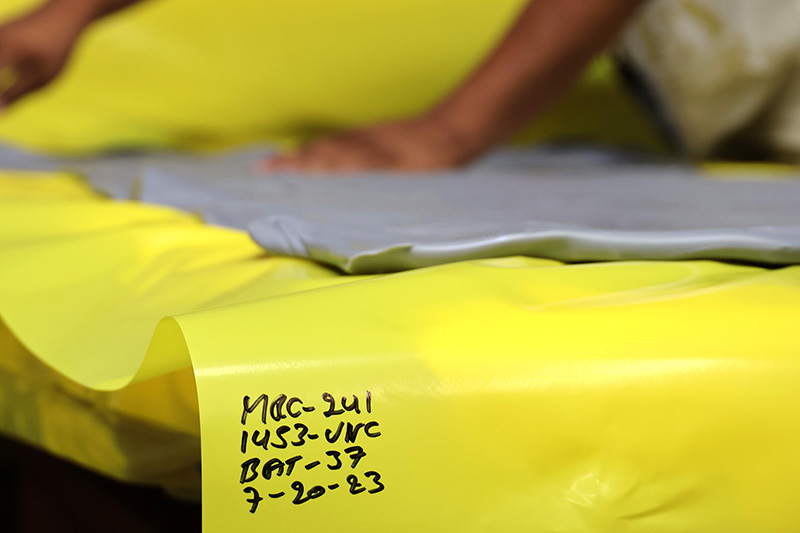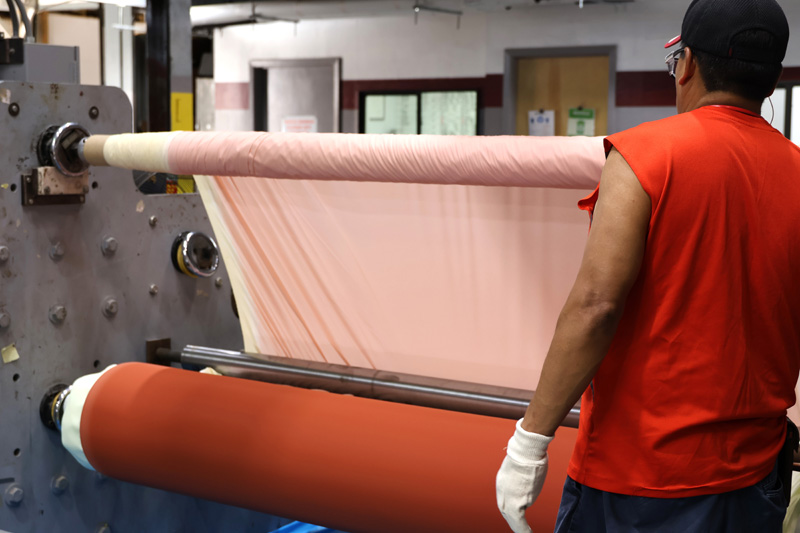Manufacturing Rubber Composites

Rubber composites, also known as plied rubber, are innovative materials that combine the exceptional properties of rubber with other reinforcing materials. By strategically layering rubber and various substrates, such as fabric or metal, rubber composites offer enhanced strength, flexibility, durability, and performance characteristics. These composites open a wide variety of applications in a variety of industries.
Designing rubber composites involves several key considerations:
- Material Selection: Choosing the right combination of rubber and substrate materials is crucial to achieving desired performance characteristics. Factors such as compatibility, adhesion, mechanical properties, and environmental resistance need to be evaluated.
- Layering and Reinforcement: Determining the optimal arrangement and number of layers, as well as the choice of reinforcing materials, plays a vital role in defining the strength, flexibility, and overall performance of the composite.
- Adhesive Systems: Selecting appropriate adhesive systems ensures proper bonding between rubber and the reinforcing substrate, enabling efficient load transfer and durability.
- Dimensional and Tolerance Control: Maintaining precise dimensional control during the layering process is critical to achieving consistent composite thickness and overall product quality.

Manufacturing Process
The manufacturing process for rubber composites typically involves the following steps:
- Preparing the Rubber: The rubber is compounded with additives and prepared to achieve the desired properties, such as elasticity, resilience, and chemical resistance.
- Layering and Reinforcement: The rubber and the chosen substrate materials are strategically layered together using methods like calendaring, extrusion, or lamination. The number and arrangement of layers are determined based on the desired performance characteristics.
- Bonding and Curing: Adhesive systems are applied between the layers to ensure strong bonding, and the composite is then subjected to heat and pressure to facilitate curing and achieve the desired material properties.
- Trimming and Finishing: The composite is trimmed to the required dimensions and subjected to post-curing processes such as surface treatment, coating, or precision cutting as necessary.
Industry Applications
Rubber composites finds widespread applications across various industries, enabling the production of a wide range of rubber components. Some key industries that benefit from rubber composites include:
- Automotive: Rubber composites are used in automotive components such as engine mounts, suspension bushings, and vibration isolators, providing enhanced durability and noise/vibration damping properties.
- Construction and Infrastructure: Rubber composites are employed in applications like bridge bearings, expansion joints, and seismic isolators, providing structural integrity, flexibility, and shock absorption capabilities.
- Aerospace: Rubber composites find applications in aircraft seals, gaskets, vibration dampers, and shock absorbers, offering resilience, low weight, and resistance to extreme temperatures and environments.
- Marine and Offshore: Rubber composites are used in marine fenders, seals, and bearings, providing excellent resistance to water, corrosion, and impact.
- Industrial Equipment: Rubber composites play a role in manufacturing equipment, conveyor belts, rollers, and seals, offering enhanced strength, wear resistance, and flexibility.

